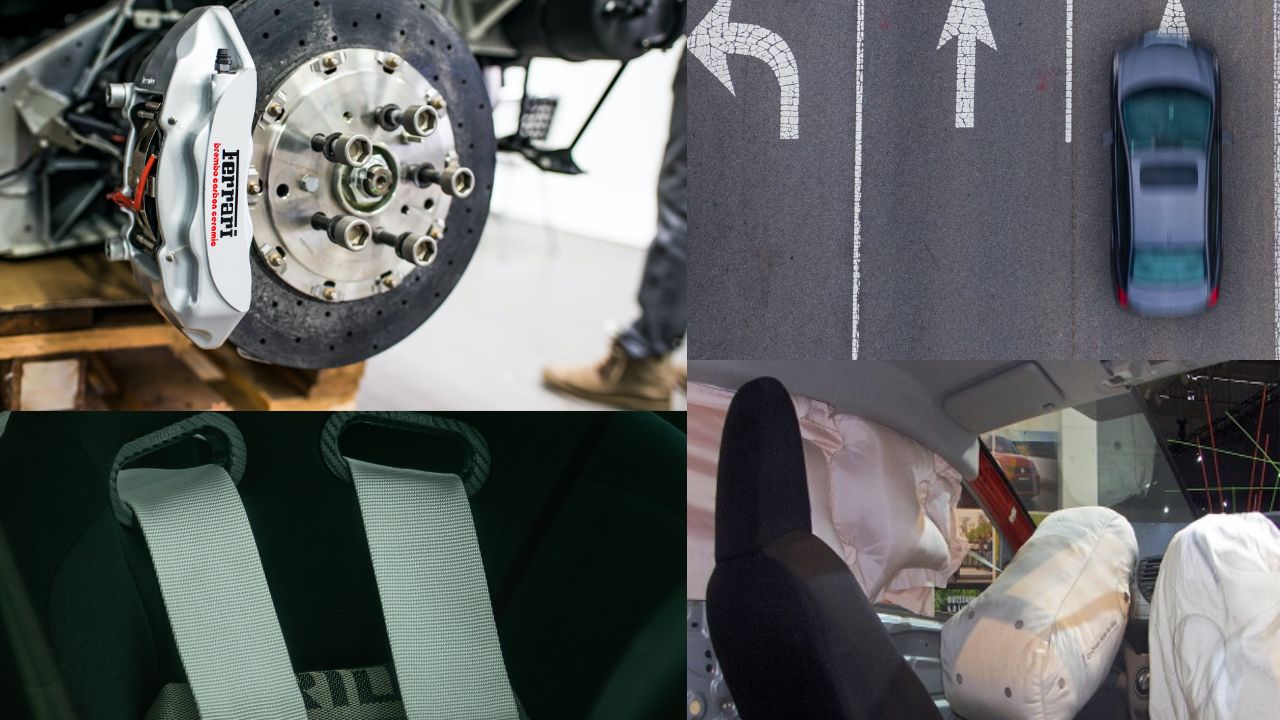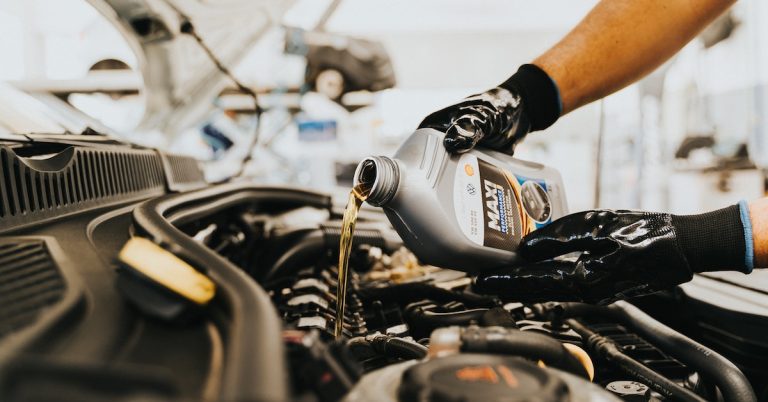Car safety features required by law include seat belts for all passengers, airbags, and electronic stability control. These features help protect occupants in the event of a collision and prevent accidents caused by loss of vehicle control.
Car safety regulations aim to reduce injuries and fatalities on the road by mandating these important safety measures. Ensuring that vehicles meet these requirements promotes safer driving for everyone and helps minimize the potential risks associated with accidents. Car manufacturers are responsible for complying with these regulations, and consumers should prioritize vehicles equipped with these standard safety features for their own protection and the safety of others on the road.
Seatbelt Safety
Car safety is a top priority for both drivers and passengers. Seatbelt safety plays a crucial role in minimizing injuries and fatalities in the event of a car accident. It is mandatory by law to use seatbelts while driving or as a passenger in a vehicle. Seatbelts are designed to keep occupants secure and prevent them from being ejected from the vehicle during a crash. Proper seatbelt installation is essential to ensure its effectiveness. It is important to follow the guidelines provided by the car manufacturer for correct installation.
Modern seatbelts are equipped with various safety features, including pretensioners, load limiters, and adjustable shoulder belt anchors, which enhance their performance and provide better protection. These safety features ensure that force is distributed evenly and minimize the risk of injury to the occupant. By adhering to seatbelt regulations and using properly installed seatbelts, we can significantly reduce the chances of severe injury or death in car accidents.
Child Passenger Safety
Car safety is of utmost importance, especially when it comes to protecting our most precious cargo – our children. Under the topic of child passenger safety, there are some important considerations to keep in mind.
Firstly, age-appropriate car seats are a must to ensure optimal protection for children during car journeys. Following specific child restraint system requirements is crucial as well. These requirements may vary depending on the age and size of the child. Proper installation of car seats is just as important as choosing the right seat. Correctly following the guidelines for installation will enhance the effectiveness of car seats in safeguarding children in case of accidents.
Vehicle Safety Standards
Vehicle safety standards are regulations put in place to ensure that cars meet minimum safety requirements. These standards cover various aspects of vehicle safety, including crashworthiness, crash avoidance, and occupant protection.
Car safety features are required by law to comply with safety standards and regulations. These standards are set by regulatory bodies such as the National Highway Traffic Safety Administration (NHTSA) in the United States. These regulations mandate the inclusion of certain safety features in vehicles to protect occupants against potential injuries in different types of crashes.
Crash test ratings play a crucial role in determining the safety of a vehicle. The NHTSA conducts crash tests and assigns safety ratings based on the performance of a vehicle in various crash scenarios. These ratings help consumers make informed decisions and encourage manufacturers to improve safety features to meet or exceed the required standards.
Manufacturers are required by law to equip vehicles with specific safety features. Examples of these mandatory safety features include airbags, seat belts, anti-lock braking systems (ABS), electronic stability control (ESC), and tire pressure monitoring systems (TPMS). Failure to comply with these requirements can result in penalties or recall of the vehicles.
Airbag Systems
Car safety features play a crucial role in protecting drivers and passengers in the event of a collision. When it comes to airbag systems, there are specific requirements set by law. One of the required airbags in vehicles is the frontal airbag, which is designed to deploy in a frontal collision and provide cushioning for the driver and front passenger.
Additionally, side impact airbags are also mandatory, serving as protection in the event of a side impact collision. These airbags deploy from the side of the vehicle and provide a barrier between the occupants and the impact. It is important to note that the deployment of airbags is regulated by certain requirements, including the speed at which the airbags should deploy and the force with which they inflate. These regulations ensure that airbags effectively mitigate the impact and reduce the risk of severe injuries.
Overall, car safety features, including airbag systems, are essential in minimizing the consequences of accidents and safeguarding the lives of drivers and passengers.
Anti-lock Braking System (abs)
The Anti-lock Braking System (ABS) is a legal requirement for vehicles. It is designed to enhance vehicle safety by preventing wheels from locking up during braking, reducing the risk of skidding and maintaining steering control. ABS has become a mandatory safety feature in many countries, including the United States and European Union.
The functionality of ABS involves sensors that monitor wheel speed. When a wheel is about to lock up, the ABS system modulates the brake pressure to that wheel, allowing it to rotate and maintain traction. This process is repeated several times per second, resulting in controlled braking and improved stability.
There are several benefits of ABS in vehicle safety. Firstly, it reduces the stopping distance on slippery surfaces, enabling drivers to maintain control and avoid obstacles. Secondly, it helps prevent the loss of steering control during emergency braking situations, minimizing the risk of accidents. Lastly, ABS enhances overall vehicle stability and maneuverability, providing drivers with increased confidence on the road.
Electronic Stability Control (esc)
Electronic Stability Control (ESC) is a mandatory safety feature in cars that has a significant impact on reducing accidents and improving vehicle handling. ESC is designed to assist drivers in maintaining control of their vehicles during extreme maneuvers or when encountering slippery road conditions.
ESC works by using sensors to continuously monitor the vehicle’s movement and compare it to the driver’s intended path. If the vehicle starts to skid, the system automatically applies individual brakes and reduces engine power to help stabilize the car and bring it back on track.
The implementation of ESC as a standard safety feature is a result of its proven effectiveness in preventing crashes and saving lives. Studies have shown that ESC can reduce the risk of accidents by up to 50%, especially in situations where vehicles may be prone to rollovers or loss of control.
With ESC, drivers have an added layer of protection and confidence behind the wheel, knowing that their vehicle is equipped with a technology that can intervene and assist in critical moments. This safety feature has become a crucial requirement by law, ensuring that vehicles are equipped to handle emergencies and reduce the potential for accidents.
Traction Control
Car safety is a top priority for both drivers and lawmakers. One essential car safety feature required by law is traction control. Traction control helps improve vehicle stability and reduces the risk of skidding or sliding on slippery surfaces.
Traction control works by using sensors to monitor the rotational speed of each wheel. If the sensors detect a wheel spinning faster than the others, the system will automatically apply the brakes to that wheel, reducing its spin and helping the driver maintain control of the vehicle.
There are legal obligations regarding traction control in many countries. For instance, in the United States, all passenger cars and light trucks manufactured after 2012 are required to have traction control as a standard feature. These laws aim to enhance road safety and reduce the chances of accidents caused by loss of control due to slippery conditions.
In conclusion, traction control is a mandatory car safety feature required by law in many countries. It plays a crucial role in maintaining vehicle stability and reducing the possibility of accidents on slippery surfaces.
Tire Pressure Monitoring System (tpms)
The Tire Pressure Monitoring System (TPMS) is a crucial safety feature required by law in many countries. TPMS is designed to monitor the air pressure in your vehicle’s tires and alert you when the pressure drops below a certain threshold. This requirement helps ensure that drivers maintain proper tire pressure, which is vital for vehicle safety.
Proper tire pressure is important for several reasons. Firstly, it improves the handling and stability of your vehicle. Underinflated or overinflated tires can affect your ability to steer, brake, and accelerate safely. Secondly, maintaining the correct tire pressure can extend the lifespan of your tires, reducing the risk of blowouts and tread wear. Lastly, it promotes fuel efficiency, as improperly inflated tires can increase rolling resistance and decrease your vehicle’s miles per gallon.
By having a TPMS installed in your vehicle, you can enjoy the benefits of real-time tire pressure monitoring. A TPMS will alert you if there is a sudden drop in tire pressure, allowing you to address the issue promptly and prevent potential accidents. This safety feature provides peace of mind, ensuring that you are driving with properly inflated tires at all times.
Rearview Cameras
Car safety is a top priority, and rearview cameras play a crucial role in enhancing overall safety. In fact, they have become a legal requirement in many countries, including the United States. Rearview cameras have been proven to significantly reduce the risk of accidents by improving rear visibility.
These cameras provide drivers with a clear view of what’s behind their vehicle, eliminating blind spots and making it easier to navigate parking spaces and crowded areas. In addition to the legal requirement, many car manufacturers are now including rearview cameras as a standard feature in their vehicles.
The main purpose of rearview cameras is to ensure the safety of both drivers and pedestrians. They are especially useful when parking, as they provide a wide-angle view of the area behind the vehicle, helping drivers to avoid collisions with objects or pedestrians.
Occupant Sensing Systems
Car safety features required by law include occupant sensing systems, which are designed to detect the presence of passengers and adjust the deployment of airbags accordingly. These systems help protect occupants by ensuring that airbags are activated only when necessary, reducing the risk of injury in a collision.
Legal Obligation For Occupant Sensing Systems
The use of occupant sensing systems is a legal requirement in many jurisdictions. These systems are designed to detect whether a seat is occupied and to determine if the occupant is a child or an adult. By complying with this legal obligation, automobile manufacturers ensure the safety of their vehicles and occupants.
Functionality Of Occupant Sensing Systems
Occupant sensing systems function through the use of advanced sensors and algorithms. These systems monitor the weight, position, and movement of the occupant to determine the appropriate airbag deployment in the event of a collision. This helps prevent the risk of injury caused by airbag deployment to passengers who do not require protection, such as children or small adults.
Enhancing Safety With Occupant Sensing Systems
Occupant sensing systems significantly enhance safety by minimizing the risk of airbag-related injuries. They ensure that the force of the airbag deployment is tailored to the size and position of the occupant, reducing the potential for harm. These systems are crucial in protecting both children and adults in various seating positions, making them a vital component of car safety features.
Conclusion
Car safety features are crucial for preventing accidents and mitigating injuries. By law, certain safety features are mandatory to ensure the well-being of drivers, passengers, and pedestrians. These features include seat belts, airbags, anti-lock braking systems, and more. Implementing these regulations helps create a safer environment on the roads.
Understanding the required safety features is essential for car manufacturers and car buyers alike. Stay informed and prioritize safety when choosing your next vehicle.







